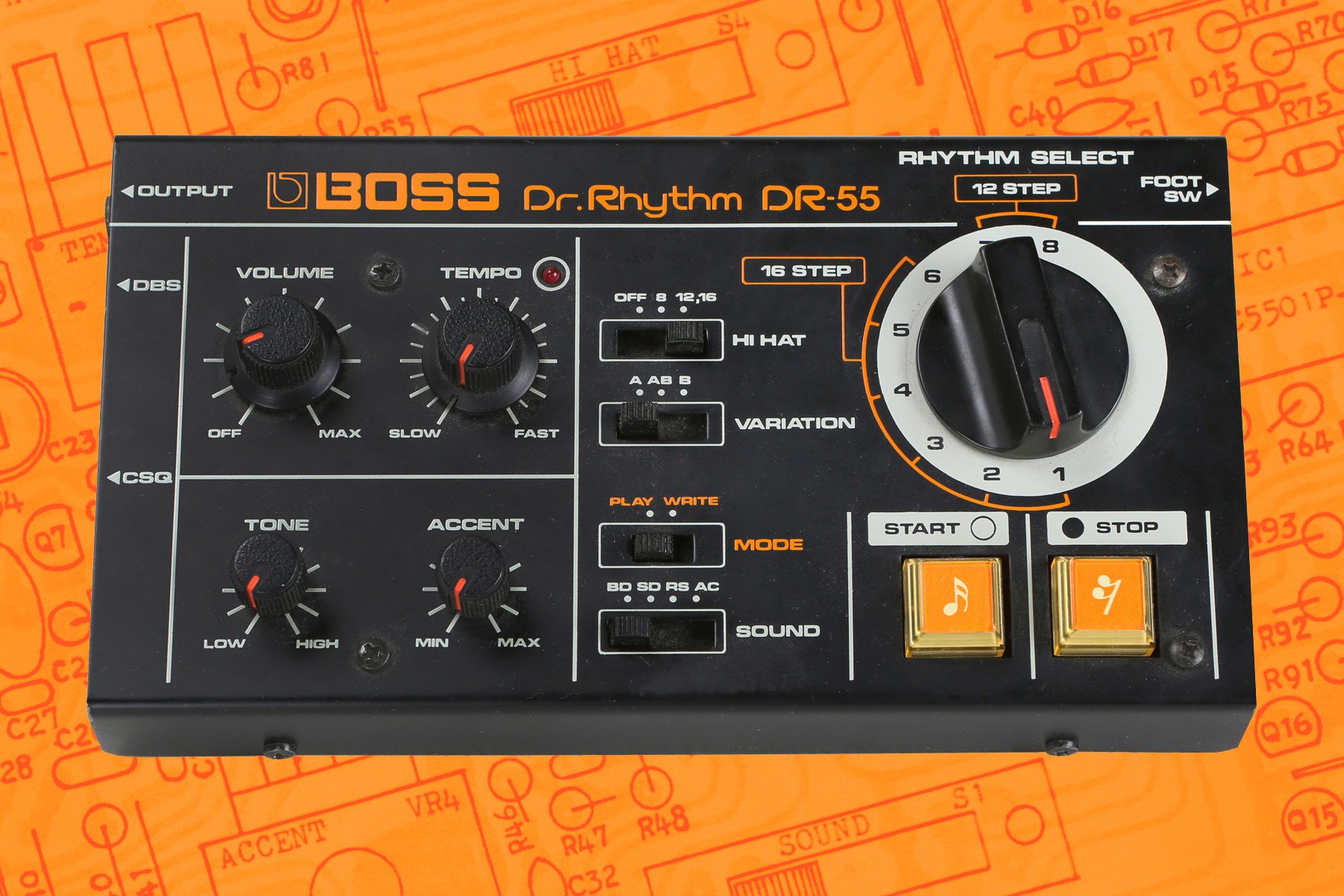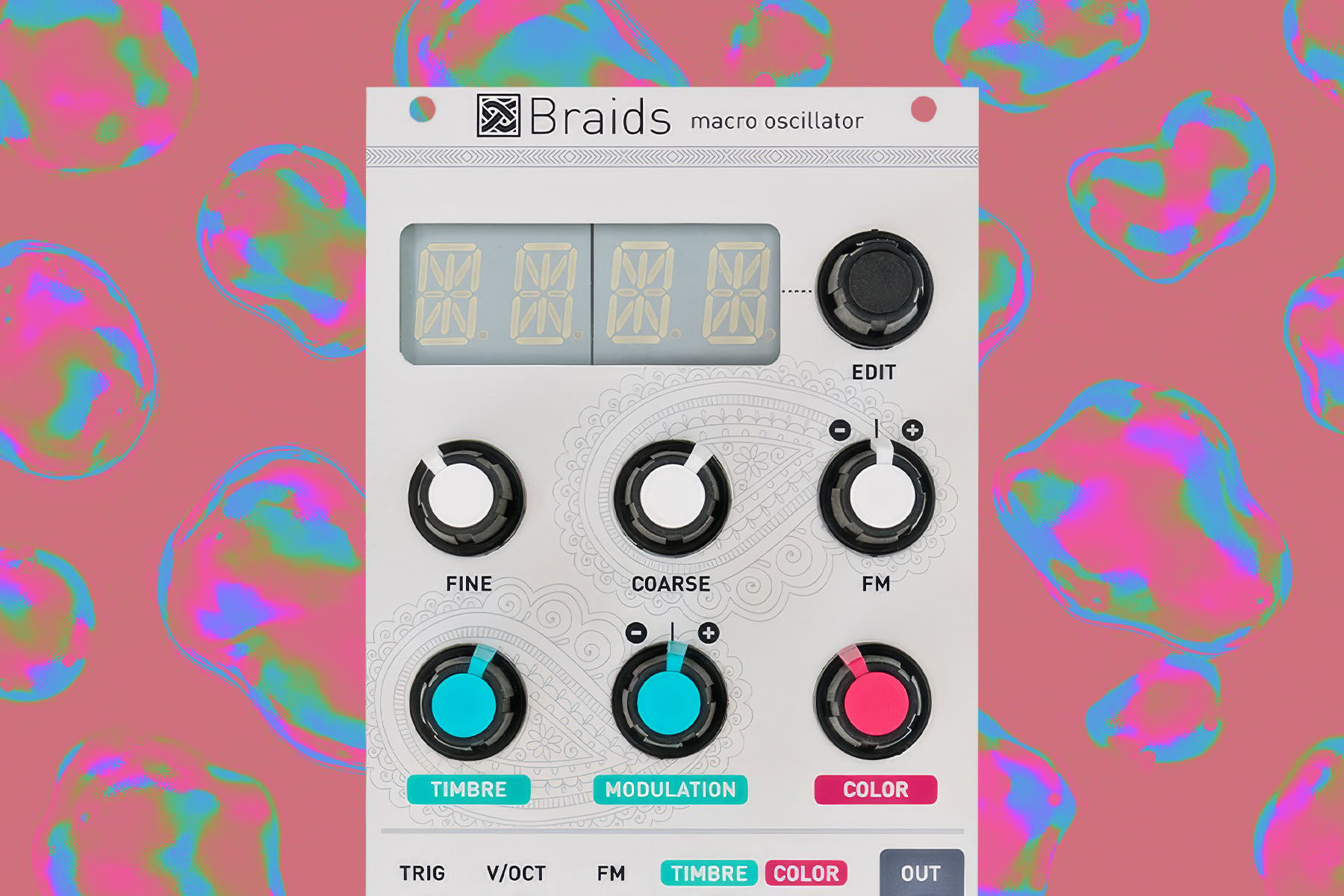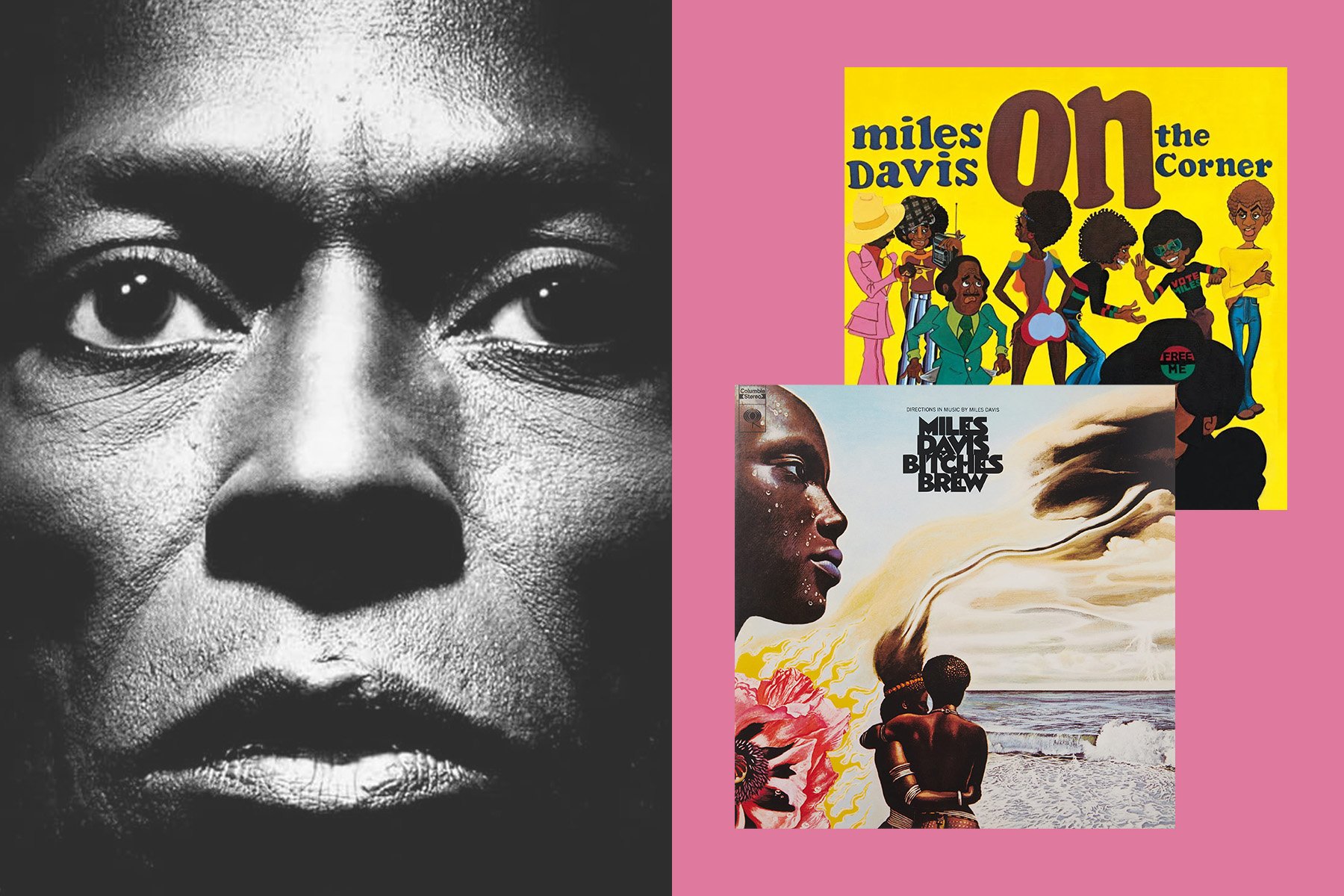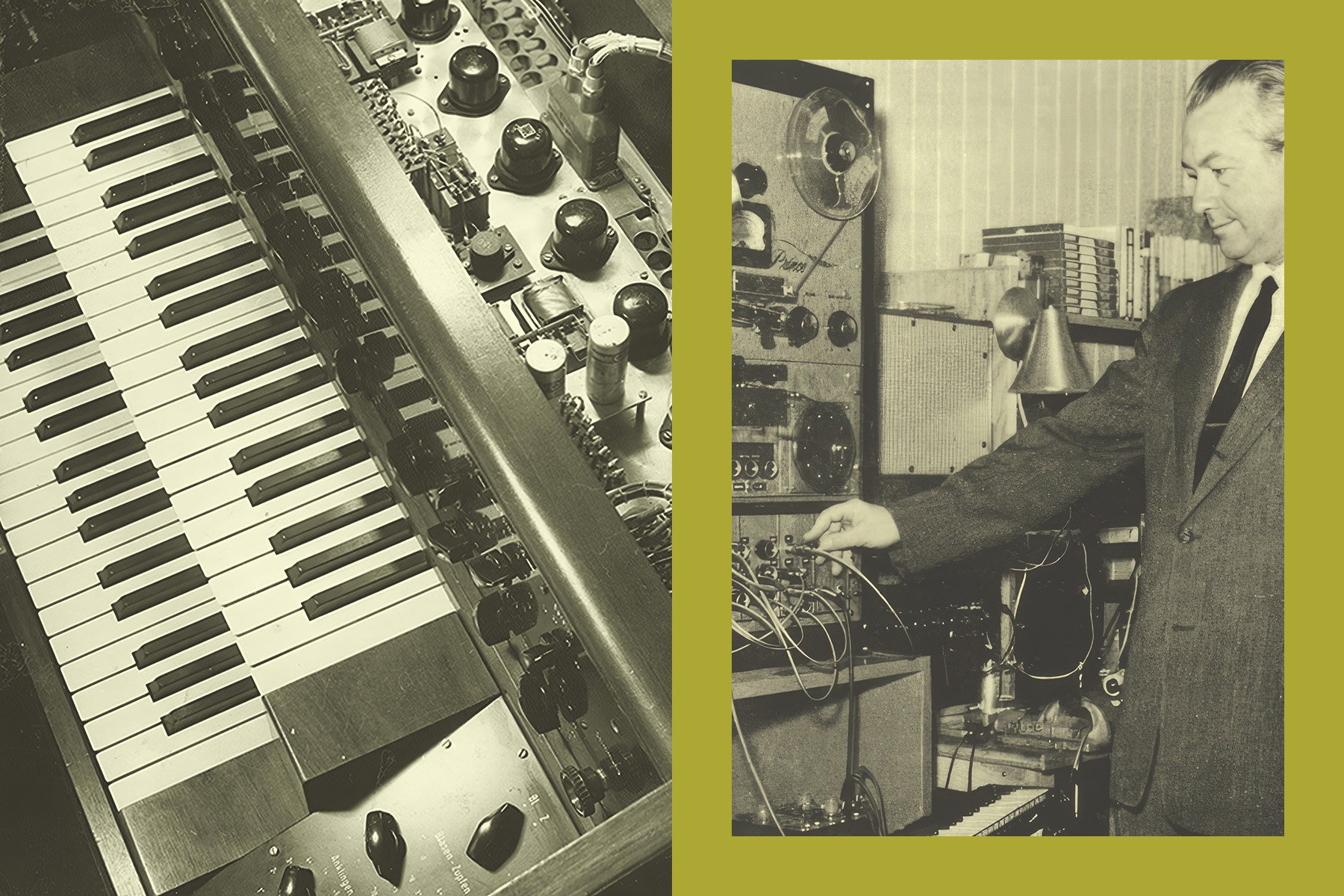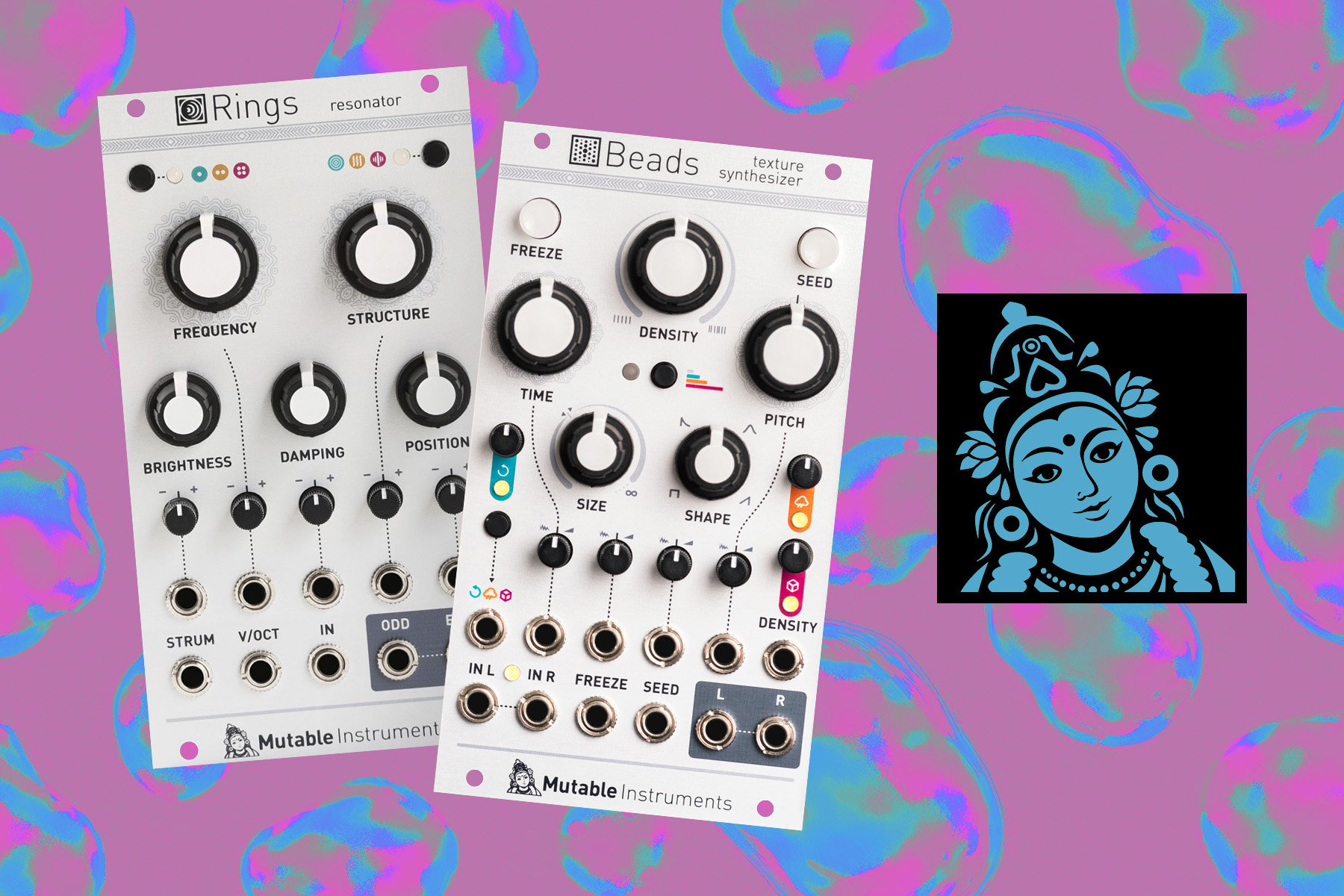Roland might not have created the first drum machine, but let there be no doubt that they are responsible for some of the most famous ones in history. From the first programmable analog creation in the CR-78 to the legendary TR-808, let there be no doubt about the indelible mark that they have left on the musical cosmos.
However, not every device they came up with was released under the Roland name, and a whole range of alternative delights were produced by BOSS. Often described as a "sister brand," subsidiary, or division of Roland, BOSS produced goodies that were primarily marketed towards the individual musician—the type that played guitar in their bedroom—as opposed to the professional studios. In some ways, they might be considered a "budget" arm of Roland, though anybody who has ever used one of their indestructible guitar pedals will know that this would be doing them a disservice. The old joke goes that only cockroaches and Boss stompboxes will survive a nuclear blast.
Either way, the Dr. Rhythm series were introduced by BOSS rather than Roland deliberately. Up until that point, drum machines were large, expensive, and had limited programmability—often only including the ability to play back preset patterns. They intended to change all of that, and provide an alternative which would be accessible to the masses. Maybe we can call it a drum machine democratization? Yes. I think we shall.
Let’s take a look through some of their most notable models over the past (gulp) forty-odd years. NB: The dates listed here don’t match up exactly with some other records kicking about, but were provided by Roland themselves, so I’m going to take their word for it.
BOSS Dr. Rhythm DR-55
Introduced in 1979, the DR-55 was the first drum machine in the Dr. Rhythm line, offered under the BOSS name. It came along just before the TR-808, but doesn’t have all that much in common with its famous cousin, other than the similar paint-job.
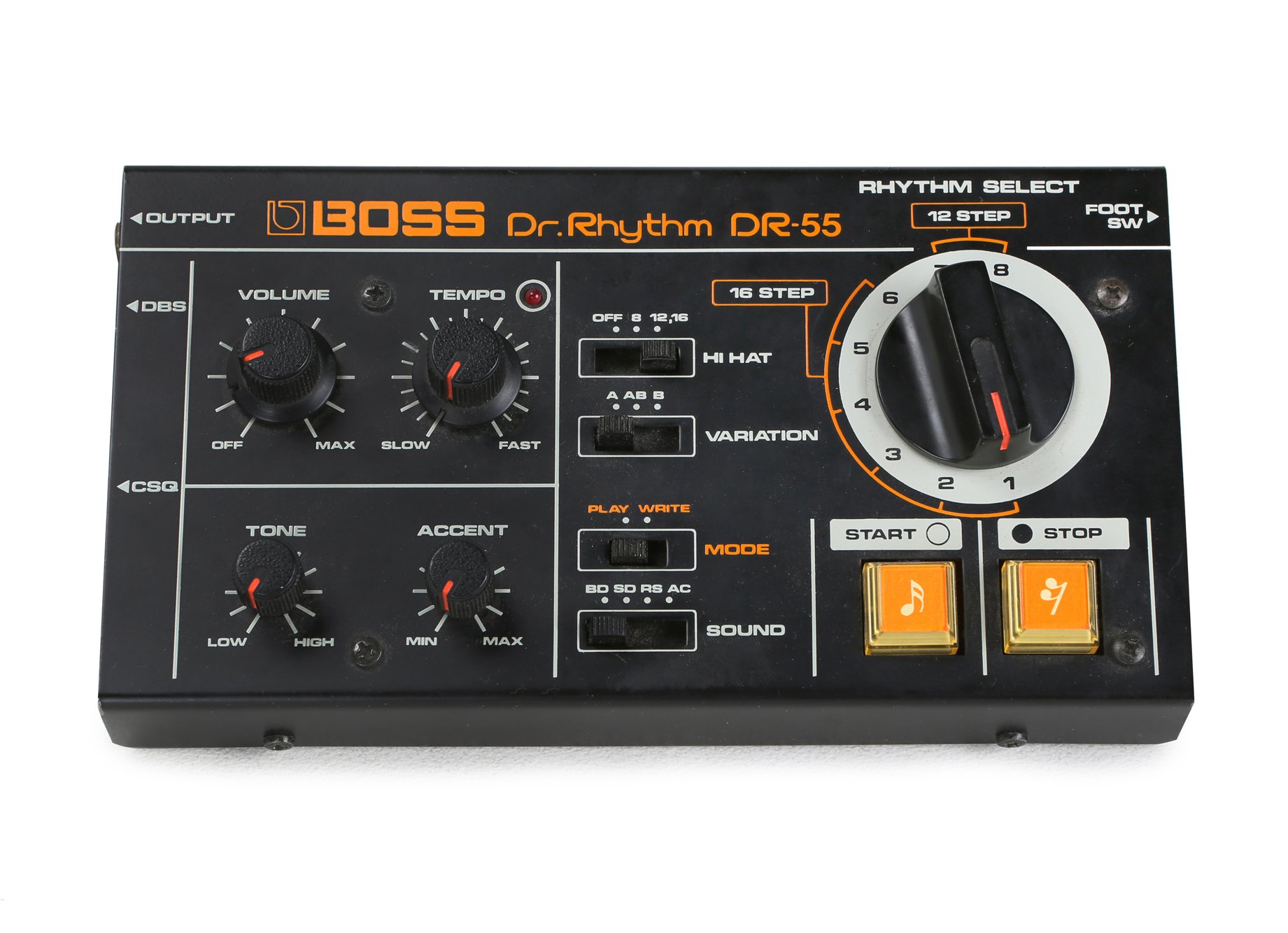
By modern standards, it is incredibly simple, with only four analog sounds available (kick, snare, rim, and hi-hat), and no MIDI or trigger inputs to speak of (though if you are brave/foolish enough, modifications are available). Patterns were created through a kind of step programming method, where you would advance through each position and place the hits manually (well, except the hi-hats that is, which had preset arrangements). Elegant, it was not.
However, for the first time it provided an affordable option for musicians who wanted some kind of customizable rhythmical accompaniment to play along with at home. Housed in a rugged metal box, the DR-55 was pretty small, and powered by batteries—allowing it to be chucked into a bag and taken out and about on the go as well. Despite its serious limitations, its innovative nature meant that it found its way into the hearts of many, including notable artists such as New Order and Depeche Mode. There is a lot of sentimentality around for this thing.
BOSS Dr. Rhythm Graphic DR-110
Arriving in 1983, the DR-110 was next in the Dr. Rhythm lineage. It stayed true to the basic concept of a portable rhythmical sidekick, expanding things with more advanced features.

It had six different analog sounds to choose from, a larger memory, and even boasted a graphical display (hence the name!) Patterns could be sequenced in a similar way to the DR-55, though the DR-110 also supported live input via the playable rubber pads, which could make the whole process of programming faster and more convenient for the impatient souls (like moi).
BOSS Dr. Rhythm DR-220A + DR-220E
Following on from the DR-110 were the DR-220A and DR-220E. These dinky machines moved away from the analog nature of their predecessors, with the included sounds being sample-based instead.
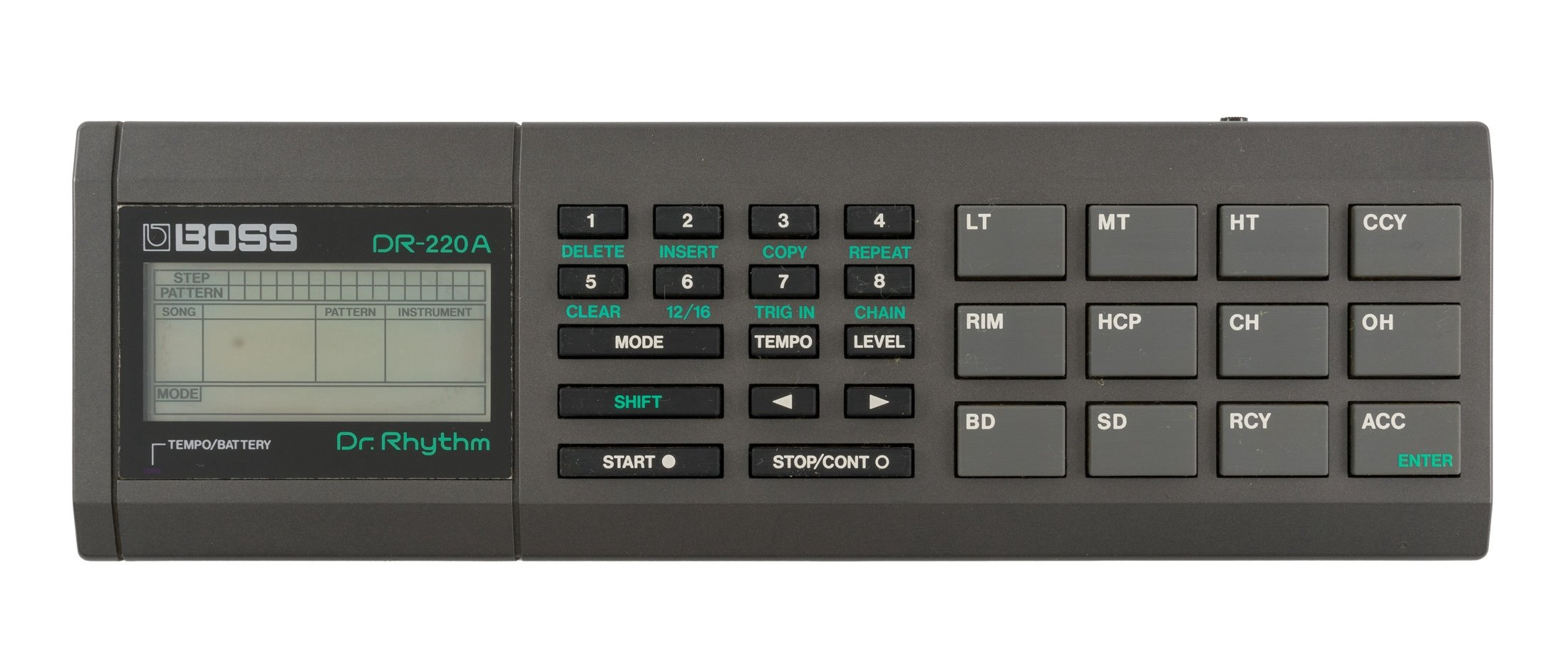
The two were aesthetically slightly different, but functionally identical—the only significant distinction being what samples were included. The DR-220A provided acoustic drum sounds, whereas the DR-220E were electronic in nature. Hence the err, model names. All things considered, they were fairly basic, but did the job they were intended to do, and provided the foundation for things to come.
BOSS Dr. Rhythm DR-550 + DR-660
Arriving in 1989, the DR-550 was a serious-looking machine, in keeping with the design sensibilities of other devices from Roland’s range such as the R-8 "Human Rhythm Composer." It built on the foundations of the DR-220, upgrading the sound engine from 12-bit to 16, and increasing the number of sounds from 11 to 48. Not only that, it also sported MIDI connectivity, allowing them to be synched up with other gear.
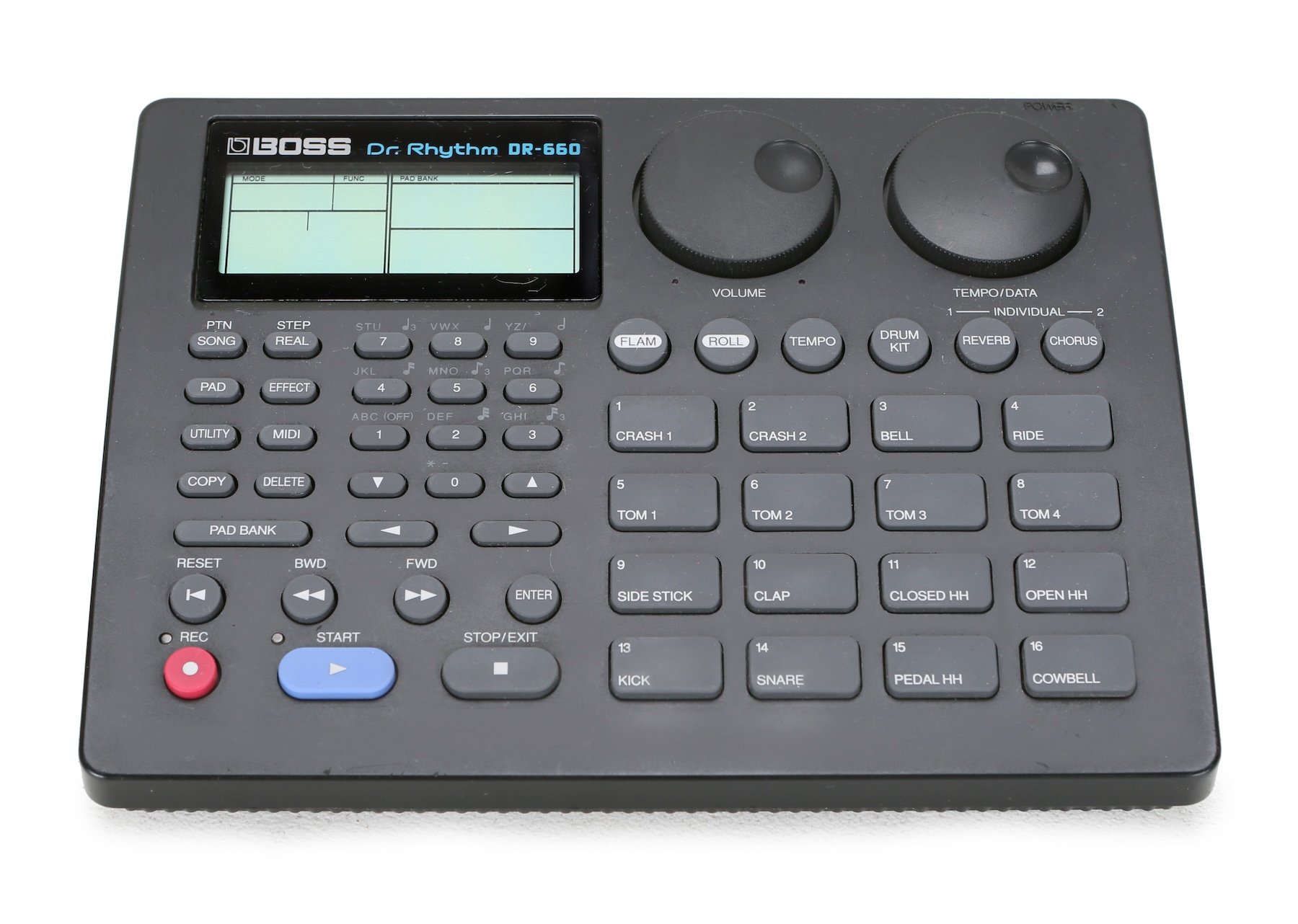
The DR-660 followed in 1992. While it has a similar design to its older cousin, it boasted a significant increase in capacity, with 255 drum samples. These included 808 and 909 kits, and each hit could be tweaked or layered on top of one another to create "new" sounds. Its MIDI implementation meant that the various samples could be triggered with an external controller, opening up the possibilities and usefulness of the DR-660 as a kind of sound module, rather than something that had to be sequenced in the box itself. Pretty cool.
BOSS Dr. Rhythm DR-5
The DR-5 was a strange beast, unlike anything else on the market at the time. Introduced in 1993, it was more than just a drum machine, providing a programmable "backing band," with 64 kits, and 256 different on-board instrument sounds, which included guitar and keyboard sounds. The front panel was laid out like a guitar fretboard to allow players to more naturally input notes, and it even included a pitch-tracking feature, which meant you could plug in a guitar and record monophonic MIDI events (which could then be played back by the DR-5’s instruments, or sent out to external devices).
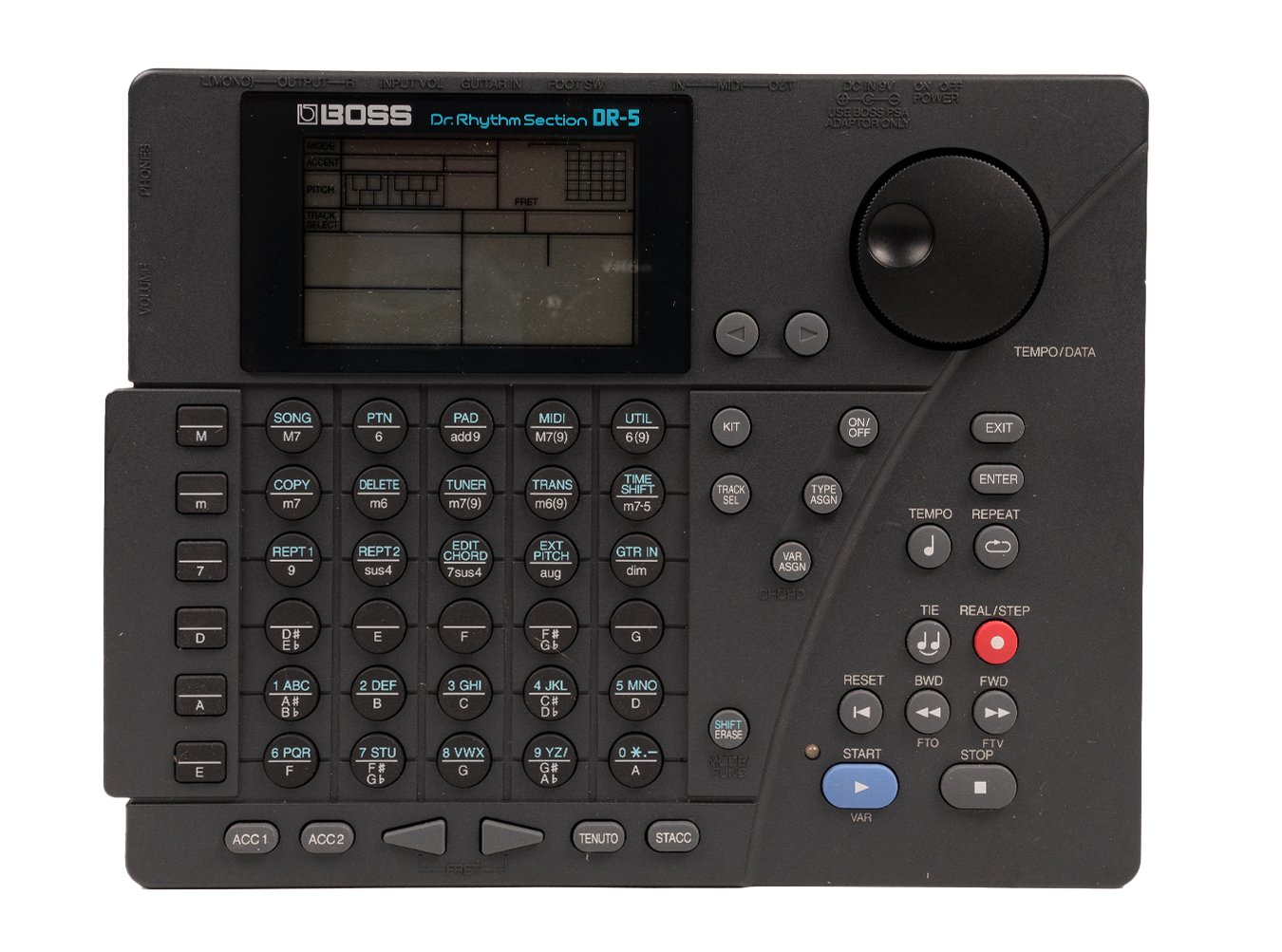
What’s more, it also had its own guitar amp simulator and tuner. This little box of tricks really was more of a fully-featured jam station, and its unique features mean that it is still rather interesting today. They haven’t quite yet exploded in price on eBay, but I am sure it’s just a matter of time. I am seriously considering buying one for myself. Writing these articles is proving hazardous to my wallet.
BOSS Dr. Groove DR-202
Casting off the traditional "Rhythm" moniker, 1998’s "Dr. Groove" DR-202 was a departure from the idea of these machines as pure backing partners for solo musicians. Instead, it was an early example of the now ubiquitous groovebox, which allowed you to create and sequence full tracks in a single unit. Along with pitchable drums and a variety of customizable preset patterns, there was also a plethora of grungy '90s bass sounds to play with, as well as a selection of real-time effects. The bass boost was especially dirty, and my favorite feature.
Sporting an iconic black and orange color palette, the DR-202 was designed to partner up with its sister unit, the SP-202—a legendary precursor to the now widely-acclaimed SP-404. Hooking the two of these up over MIDI and triggering samples on the SP-202 from the MIDI sequencer of the DR-202 was where things really came into their own, and could be great fun. Unfortunately, as cool as it was, the sequencing always felt a bit fiddly to me in contrast with other earlier examples in the lineup due to how things were represented on the display.
BOSS Dr. Rhythm DR-770, DR-670, + DR-880
The DR-770 arrived at around the same time as the DR-202, which, rather confusingly, was a few years before the DR-670. Gotta love those Roland naming conventions, huh? These machines were effectively further developments of the legacy of the D-550 and DR-660, taking advantage of the technological progression to drastically increase the memory capacity by doubling it, as well as including different kinds of configurable effects such as reverb, flanger, etc. You could store up to 10,000 patterns on the Dr-770, which honestly seems kind of excessive. The DR-670 was much of the same, but with the addition of velocity sensitive pads, and the ability to trigger different patterns via the same, which is actually pretty smart.
The DR-880 was the last major Doctor to be released, appearing in 2004—the same year that NASA landed on the surface of Mars. This unit pushed the Dr. Rhythm series even further than before, with over 400 built-in sounds, an array of sequencing improvements, a direct instrument input to which effects could be applied, and even USB connectivity. For me, this is where the Doctors came into their own, and there is a lot about the DR-880 which is reminiscent of other products in the Roland range, such as the SP-808 and MV-8000. An oft under-appreciated golden era.
Oddities
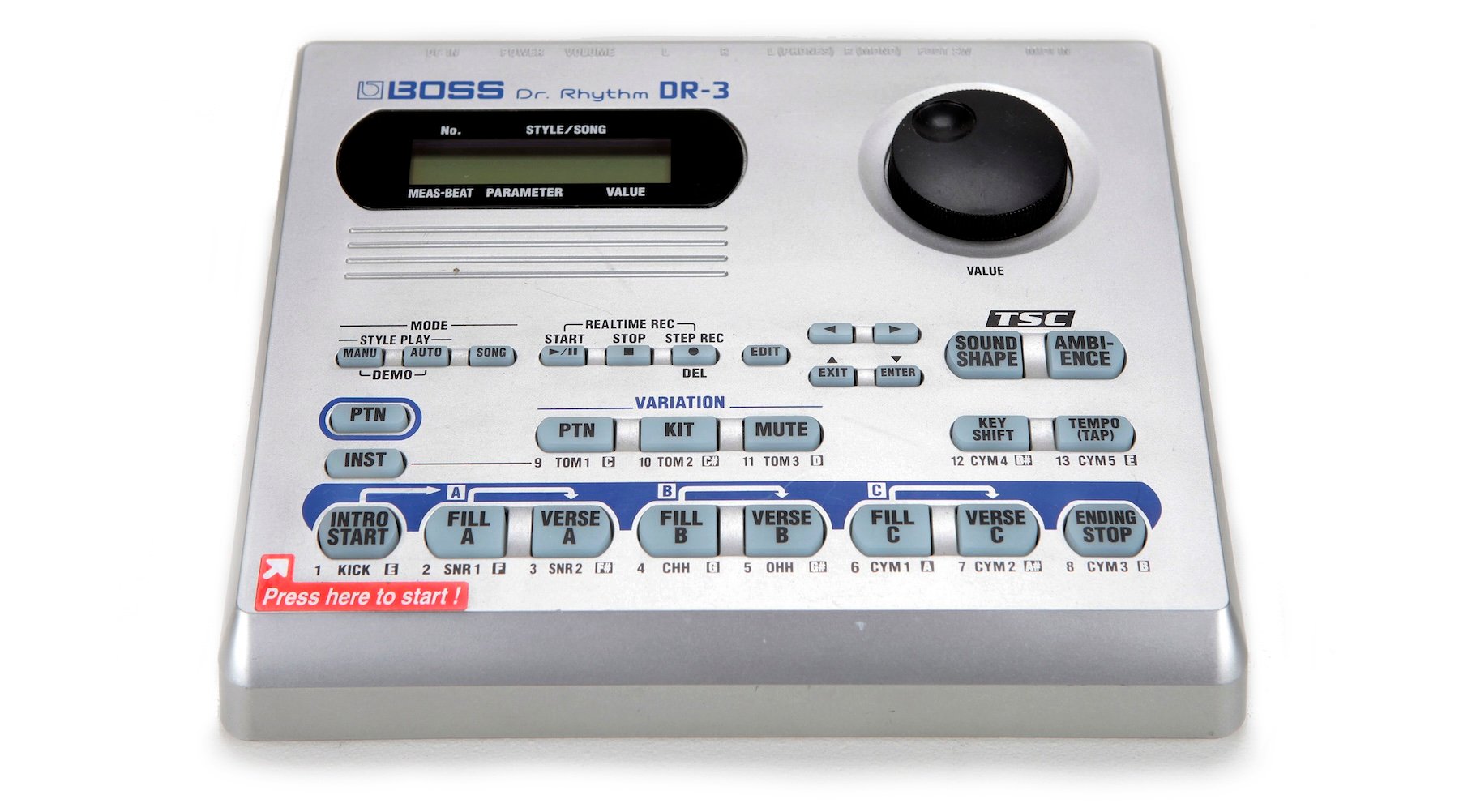
You might have thought that the above devices were strange enough, but a special mention has to go to a few of the more bizarre members of the Dr. Rhythm family. Firstly, 2003’s DR-3, which is notable only because of how dull it is in comparison to its relatives. I honestly kind of hate it.
Harkening back to the early Dr. Rhythm days, this is an extremely basic machine which was apparently created to be an ultra-affordable option for guitarists who wanted some kind of accompaniment for practice sessions. Hmm, is this sounding familiar? I mean, this was a groundbreaking idea in 1979, but in the new millennium? It would probably be best if we let it fade into obscurity.
A more intriguing oddball is the DR-01S Rhythm Partner, which kind of looks like an alien bongo. This might not technically fit into the Dr. Rhythm series, but then again, I’m not really sure if it fits in anywhere. At first glance, I thought that the large, drum-like pad which takes up half of the design was an actual thing that you could hit, but no. It’s, errm. A speaker. It again looks to be a straightforward device for those who just want to jam along with their guitar, and to be honest is probably more like what the DR-3 should have been.
Today
In cold, practical terms, you could easily argue that while they may have been transformative in their time, the Boss Dr. Rhythm machines have now been rendered completely irrelevant by the crushing advance of technology—particularly when you consider their original intended purpose. If a budding guitarist needs a backing track to play along with these days, there are a myriad of far more affordable, and capable options available. The Polyend Step, Elektron Digitakt, or even the Korg Volca series all spring to mind immediately.
With that said…convenience and capability are not always conducive to creativity, and the Dr. Rhythm series has continued to inspire to this day, with curious producers exploring their limitations and even finding ways to break them through modifications and upgrades. I must admit that I, too, have hacked apart my own DR-55 to expand its sonic possibilities, which would probably horrify a number of purists out there—but hey—at least now I can sequence it from my modular, and you should hear how fat the kick can sound. Oft.
Even when these machines remain unmolested by callous circuit benders, they can simply be a lot of fun to use in practice. The chunky buttons and groovy design of the DR-202 just calls out to be played with, and there’s something deeply satisfying about making music with an idiosyncratic sequencer that is older than you (well, older than me at least).
As someone who has owned and utilized a number of the Dr. Rhythm series, I can see the appeal. If you can pick one up cheaply, they are rather beautiful and charismatic creations that can help kickstart ideas, simply by dint of their idiosyncrasies. However, dropping serious cash on them doesn’t make much sense. If your primary interest is in finding a portable, battery-operated hardware drum machine, something like the Roland TR-6S would probably be a far more sensible option.
The enduring popularity of these machines is evidenced by the prices that they command on the used market. I suspect that part of this is probably driven by collectors who wish to have a part of musical history, rather than them all ending up in a state of active use. There are notable exceptions, mind you, though I dare say this will change in the coming years. Get them cheap while you still can. The only reason I haven’t bought them all up is because I am literally drowning in weird machines that I don’t know how to use. But maybe just one more…

